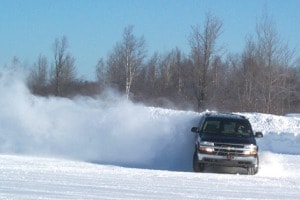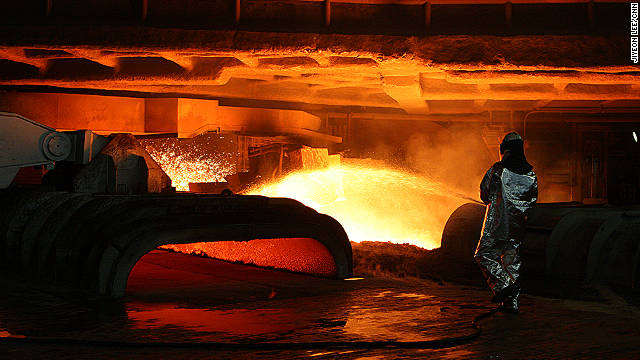
Want to make your own amazing vanity plate? Check out the article below, then use the vanity plate dictionary to put one together!
You see a vanity plate on the car ahead of you. Perhaps it's on a Ford Mustang, a Volkswagen New Beetle or a Mini Cooper— cars that just beg for vanity plates. You read it over and over, wracking your brain to decipher its meaning, wondering if you're missing a good joke.
It helps if you know "the code." Like the abbreviations and symbols used in e-mail and instant messaging ("BTW," "LOL," "TTYL"), there is a shorthand for vanity plates (also known as "personalized license plates" or "custom plates"). Fortunately, there are dictionaries that will tell you, for example, that "U4IC" means "euphoric," and "6S" means "success."
Dennis Cowhey, author of What Does That Mean? The Personal Stories Behind Vanity License Plates, calls himself the "world's greatest expert on vanity plate meanings." Cowhey traveled the U.S., stopping total strangers to hear their stories. He also distributed questionnaire cards and got about 850 cards back, many with full explanations.
The responses are a testimony to human creativity. It's not easy to invent a meaningful, one-of-a-kind label for your wheels within seven or eight letters and numbers.
"You wouldn't believe how clever the plates are," Cowhey said. "Some are touching, heart-rending, hysterically funny and everything in between. People wear their hearts on their sleeves."
Apparently so: Cowhey's personal favorite is a series of two plates, held by a married couple. His says, "TYED-UP"; hers says, "KEENKY2." The pair intentionally drives alongside each other as they commute each day to their family-owned business, taking great enjoyment from the shocked faces of pedestrians and other drivers.
On most days, it's not hard to find vanity plates that express the nature of the car or driver ("XCLR8TR"), occupation ("HV A SLCE," on the car of a pizzeria owner) and personal statements ("WAS HIS").
Many Edmunds.com readers have vanity plates as well. Burt and Jacquie Harwood of Washington bought their vanity plates with safety in mind. (Attention, parents!)
"Each time I provided a car for one of my children, the car had a vanity plate with their first name on it, front and back," said Burt. "Living in a small town, their driving habits were more easily reported to me, and they knew it."
Though Harwood's kids did get into a few scrapes, he's convinced that the vanity plates made a difference in their driving.
Reader Brian Bear's family likes to play on their last name. "I have two plates — 'SU BEAR U' and '4 BEARRS'," he said. "The 'SU BEAR U' one is on my '04 Subaru Forester XT (and my previous '00 Subaru Outback)," he said. "'4 BEARRS' is on our '02 Mazda MPV. We are a family of four, plus the last name. I've always had some sort of plate with the word 'BEAR' in it over the years." Even his parents and other relatives have vanity plates that incorporate the Bear name.
Wisconsin reader Robert Hammen chose his vanity plate in order to defend his car: "I own a 2004 Pontiac GTO, and got a lot of flak from traditional GTO owners who didn't think the car was worthy," he said. "So I got the plate, 'REAL GTO' just to rub it in."
"CNSRSHP" OR "FRESPCH"?
Unlike bumper stickers, which aren't issued by state governments, vanity plates are subject to significant legal controversy. Columnist Ken Paulson of The Freedom Forum, a nonpartisan foundation dedicated to first amendment rights, describes some of the legislative battles waged over the censorship of vanity plates. Many states, for example, ban vanity plates related to obscenity ("SHTHPNS"); hate speech ("ARYAN-1"); references to alcohol, tobacco or drugs ("VINO"); religion ("ROMANS5"); or the implication of violence ("GLOCKEM," which refers to Glock, a semiautomatic handgun manufacturer). Paradoxically, this last plate was stripped from the car of a Tennessee law enforcement officer.
Each state determines which vanity plates will pass muster. A California vanity plate request, for example, is thoroughly reviewed by several people with both foreign language and slang dictionaries. The Department of Motor Vehicles (DMV) has the right to refuse or recall any plate that may be considered "offensive to good taste and decency, which could be misleading, or conflict with any license plate series currently issued," according to the state's vehicle code.
What constitutes good taste and decency, however, is up to the screeners and open for speculation. What's more, once a plate is issued, anyone who finds a plate offensive for any reason can submit a written request to the DMV to have that plate rescinded. (The latest one to be recalled in California as a result of a complaint letter was "FDUBYA.")
The state's right and ability to censor vanity plates is vague territory. When the Cal Berkeley football team was knocked out of the running for the Rose Bowl (many say unjustly), fan Paul Lewis ordered a plate online which said "IH8 BCS" ("I hate the Bowl Championship Series"). The initial order was processed and accepted, but when Lewis went to pick up his plates, he was told by the DMW that he couldn't have them, because of the "H8."
Ironically, Lewis didn't intend to use the plates for his everyday driving.
"I was going to drive with them for a day, or save them for football season, but then eventually give them to Cal football," he said.
Lewis appealed in a letter to Sacramento, explaining that because the BCS wasn't a person, his plate shouldn't qualify as "hate speech," and that educational scholarships were lost as a result of Cal's contested elimination. He's still waiting to hear back. In the meantime, Lewis sold T-shirts featuring a mock-up of the plate — and donated all the profits to Cal Berkeley's athletics department.
REAL MONEY, REAL CRAZIES
Car-crazy California issued its first personalized plate in late 1970. As of July 2007, there are over 1.4 million such plates on California roads. During that time, the state has raised more than 1 billion dollars from vanity plate sales, according to the DMV. Nationwide, vanity plates can cost anywhere from $10 to $65 per year, depending on the state. California calls them "environmental plates," because it uses the revenue to fund programs that preserve and protect the environment, such as the purchase of land for preserves, studies of endangered species and public education.
The U.S. doesn't hold a monopoly on being plate-crazy, though. In February 2005, a Hong Kong man, wearing a mask to protect his identity, paid HK$7.1 million — then $910,000 — for a license plate which said, simply, "12." Why would anyone pay that much for a license plate? Because the number, when pronounced in Cantonese, sounds like "certainly easy."
But $910,000 wasn't even close to the highest price ever paid for a vanity plate in Hong Kong. In 1994, business magnate Albert Yeung paid HK$13 million (US$4 million) for the number nine, which sounds like "everlasting" in Cantonese. Yes, 4 million. Which makes one wonder: What's up with these guys?
One man is capitalizing on the plate craze without buying or selling a single plate. Richard Barnett has just launched Great Plate Exchange, an online forum where users can purchase or sell active vanity plates, similar to an eBay auction. Barnett gets a small fee for listing the plate, and a commission on the transaction. Once a deal is struck, he links the parties to the appropriate DMV to make the legal transfer. Although there are only a handful of plates on the site so far, the concept is one that could take off once enthusiasts discover it.
Collector Mania
Like other hobbyists, plate enthusiasts buy, sell and trade plates on eBay and any number of plate-specific sites, such as PL8S.com. This includes not only vanity plates, but rare plates, plates for a certain color or type of car, and plates from all 50 states. A member of the Automobile License Plate Collectors Association (ALPCA)built an incredible Web site, "License Plates of the World", which illustrates plates from every corner of the planet, as well as special-issue military plates and U.N.-issued plates. ALPCA has just issued its own book, A Moving History — 50 Years of ALPCA, 100 Years of License Plates, to celebrate its golden anniversary.
One of Edmunds.com's own programmers, David Haber, developed CALPL8S to highlight his collection. He notes that, unlike some other hobbies, plate collecting appeals to both young and old.
"You see them all the time: kids play games, spot states on license plates on long trips and get little plates with their name on them for their bicycles," said Haber. "I've always been interested in plates, and about six years ago I discovered other collectors sold plates on eBay. Before then I had never considered they were something you could collect."
Haber's car sports a creative plate that includes a symbol of a hand, one of four symbols available for use in California. It reads, "G(hand)DALF," for Gandalf the wizard, of Lord of the Rings fame. Other available symbols are a star, a plus sign and a heart, leading to all sorts of imaginative combinations.
If you enjoy the challenge, you can find a way to express just about any opinion or passion in a vanity plate. The rest of the world will enjoy laughing at what you said — or puzzling over what you meant.
Read more http://www.edmunds.com/driving-tips/vanity-plates-the-411-on-those-crze-pl8s.html




















